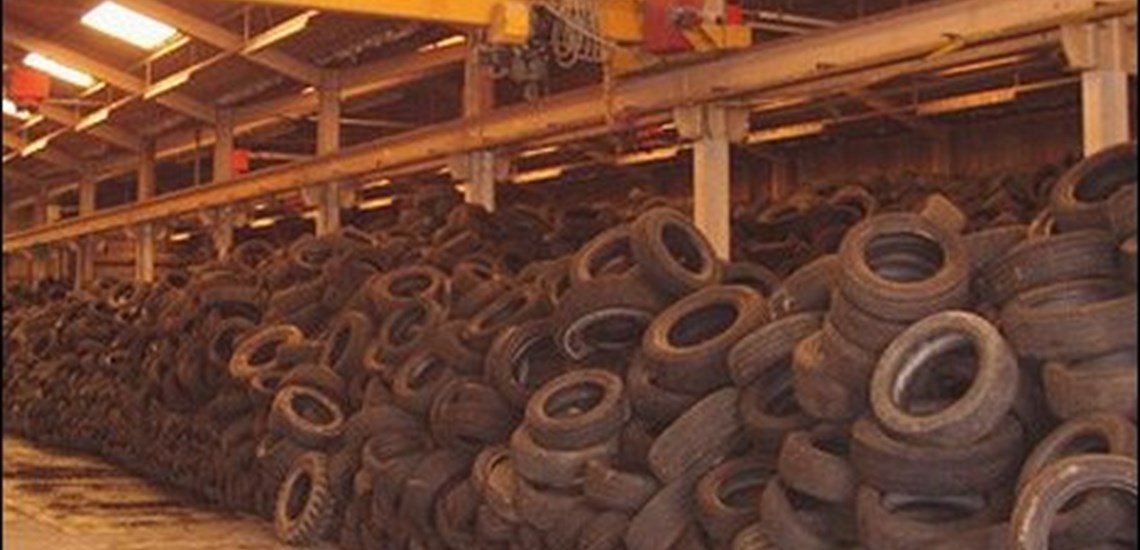The EA and DeFRA give Tyre and Rubber Recycling revealing responses to an FOI request
UK T8 Exemptions – FOI Responses from DeFRA and the EA
The UK has a series of exemptions from Permitted Waste Sites, these Exempt sites operate under a T8 Exemption. It is relatively simple to obtain a T8 Exemption, there is no fee involved, just an agreement on storage and throughput volumes.
These T8 sites tend not to be checked by the Environment Agency (EA), unless there is a complaint or a related environmental issue, such as a fire, or abandonment.
The Tyre Recovery Association (TRA), and legitimate Permitted operators have long campaigned for the end of T8 Exemptions. They claim that the Exemption allows rogue operators leeway, and they quote the abandoned sites and the “disposal” fires as evidence of the role of T8 Exemptions in tyre collection malpractice. See the Tyre and Rubber Recycling Podcast with the TRA’s Peter Taylor.
For several years now, the EA has talked about the government bringing an end to T8 Exemptions. When this was revealed at a TRA conference there was near unanimous approval for the move. “Why,” the Permitted business asked: “should they have to compete with players who were able to evade the rules and costs of Permitted operations?”
The following year, the Exemption had been delayed because DeFRA were looking at the issues. That became a further delay. More recently, the EA stated that the reason the T8 Exemptions had not been removed was down to DeFRA wanting to have more information on the subject: They were still talking to DeFRA.
Tyre and Rubber Recycling put in a Freedom of Information Request to both DeFRA and the EA. We asked them both the same set of questions.
Question 1. How many exempt sites are registered for T8?
Question 2. How many of these have been visited by the EA? In the past year?
Question 3. What proportion were above the limit for T8 exemptions?
Question 4. How many prosecutions have there been for illegal waste activity with regards to the T8 Exemptions?
We thought that these were questions that would give some idea of where DeFRA and the EA were on T8 Exemptions.
Given the fact that the EA was saying that DeFRA was holding up the ending or modification of T8 Exemptions, one would have thought that DeFRA would have some statistical information on the subject. The reality was that they held absolutely no information on T8 Exemptions. How then can they be discussing modifying or ending those same Exemptions if they have no data? DeFRA is the government department responsible for environmental laws and changes to those laws.
The EA took their full 16 working days to respond. Their response was as follows:
“Question 1. How many exempt sites are registered for T8?
The information you have requested is available online as Open Data. Full details of supporting information and licensing are available when you access the data. The number of exemptions is published quarterly at
https://data.gov.uk/dataset/fe546d38-408d-4275-8e74-55e197c6f11a/waste-exemptions
Please note, T8 can be registered, which are then not used, or the operator has no plans to use.
Question 2. How many of these have been visited by the EA? In the past year?
59 sites were inspected with T8 registrations during 2019. For 2020 to end of August, 17 sites were inspected with T8 registrations.
Question 3. What proportion were above the limit for T8 exemptions?
22 of these sites were not compliant with the T8 limits from 2019 inspections, 8 were not compliant with limits from 2020 inspections.
Question 4. How many prosecutions have there been for illegal waste activity with regards to the T8 Exemptions?
No prosecutions – other enforcement action has been taken.”
There are some 1,179 T8 Exempt sites in England and Wales, this includes 401 agricultural sites, which may or may not be recycling tyres, and 778 other T8 Sites. The EA is unclear as to how many of these T8 Exemptions actually are in operation.
In 2019 the EA inspected 58 T8 sites, that is just under 5 per cent of T8 sites. We should have asked how many Permitted sites were visited in the same period, anecdotally, the percentage is much higher, with some sites receiving multiple visits.
Peter Taylor commented; “It seems that they have been relatively active but it is the lack of meaningful legal action that is their weakness, it is that which would send a clear message to the trade and indeed to retailers and others who are clearly ignoring their legal Duty of Care. A near 40% non-compliance rate should be telling them something.”


















